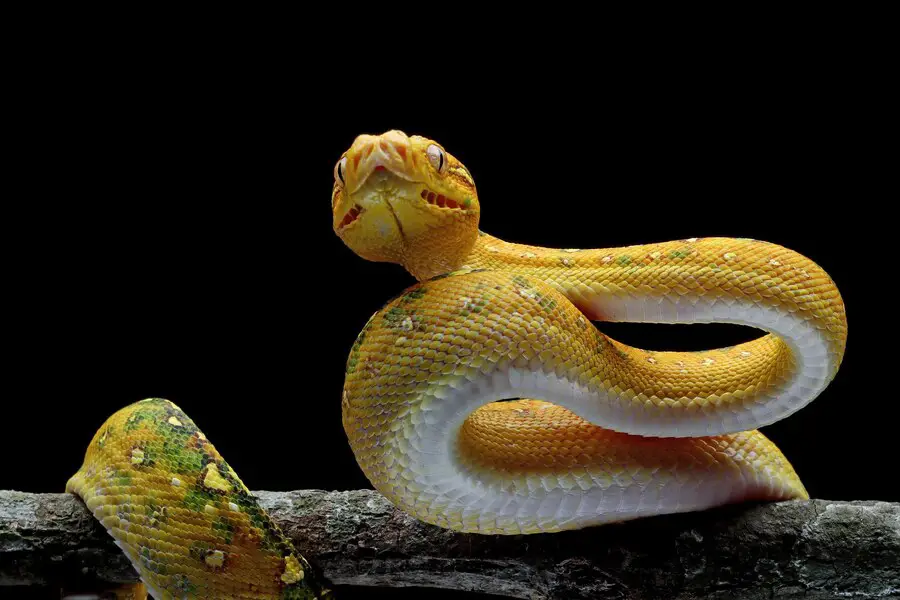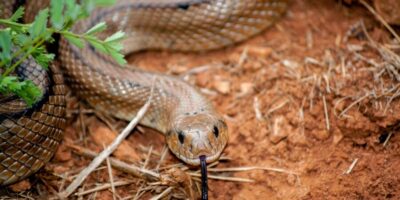Ball pythons, revered as beloved reptilian companions, captivate pet enthusiasts with their gentle demeanor and striking patterns. Delving into their anatomy is essential for responsible ownership. This introduction sets the stage for exploring the intricacies of ball-python dentition, shedding light on the significance of understanding their teeth. As we unravel the mysteries of their oral anatomy, we gain valuable insights into ensuring the well-being and health of these enchanting creatures.
Anatomy Of Ball Pythons
The anatomy of ball pythons is a fascinating tapestry of adaptation. Their sleek bodies and unique scales contribute to their allure as pets. Within this intricate design, their oral anatomy, specifically their teeth, plays a crucial role. Ball pythons possess a set of sharp, recurved teeth that aid in grasping and securing prey. This oral structure reflects their carnivorous nature, offering a glimpse into the intricacies of their evolutionary adaptations for survival and hunting in the wild.
Differentiation Between Tooth Types
Within the oral arsenal of ball pythons, a nuanced differentiation between tooth types reveals their multifaceted hunting strategy. Fangs, prominently featured in venomous snakes, are absent in these pythons. Instead, they sport rows of smaller, recurved teeth. While lacking the venomous potency of fangs, these smaller teeth play a pivotal role in capturing and restraining prey. This distinction highlights the unique adaptations in their dentition, providing insights into the intricacies of their feeding behaviors and survival mechanisms.
Number of Teeth in Ball Pythons
In the realm of dental prowess, ball pythons boast a formidable array of teeth, with an average count ranging from 25 to 30 on each side of the upper and lower jaws. This count positions them among the moderate tooth count category within the snake kingdom. Contrasting with venomous species that may have fewer but larger fangs, the ball python’s numerous smaller teeth underline their distinctive hunting strategy, emphasizing constriction over envenomation in capturing and consuming prey.
Tooth Arrangements
The tooth arrangement in the upper and lower jaws of ball pythons follows a precise pattern, contributing to their efficient feeding strategy. The upper jaw typically features a row of inwardly curved teeth, allowing for a secure grip on prey during the initial strike. Meanwhile, the lower jaw complements this arrangement with a set of corresponding teeth, facilitating the process of swallowing and ensuring a smooth journey down the digestive tract. This harmonious tooth alignment showcases the evolutionary adaptations that enhance their predatory prowess.
Functions Of Teeth In Ball Pythons
The teeth of ball pythons play a pivotal role in their survival and well-being. Beyond their obvious function in capturing and restraining prey, these teeth aid in the initial stages of digestion by assisting in the swallowing process. Maintaining healthy teeth is crucial for a snake’s overall health, impacting its ability to hunt, consume, and process food efficiently. Regular dental care considerations underscore the integral link between dental health and the overall vitality of ball pythons.
Role In Feeding And Capturing Prey
The teeth of ball pythons are essential tools in their predatory pursuits. Specialized for grasping and securing prey, these teeth play a critical role in the feeding process. When hunting, ball pythons use their teeth to seize and immobilize their prey, allowing for efficient constriction. The recurved design of their teeth assists in gripping and holding onto the prey, facilitating a successful capture. The significance of their dental structure underscores the predatory adaptations that contribute to the snake’s ability to thrive in its natural environment.
Replacement And Regeneration
Ball pythons exhibit a remarkable dental feature—continuous replacement and regeneration of teeth. As they consume and wear down their teeth during feeding and other activities, new teeth constantly emerge to maintain optimal functionality. Proper care for dental health is vital for these reptiles, ensuring the seamless process of tooth replacement and preventing issues associated with dental wear. A balanced diet, adequate environmental conditions, and regular veterinary check-ups contribute to the overall well-being of a ball python’s dental health.
Shedding Process
The shedding process in ball pythons is a crucial aspect of their overall health, with indirect implications for dental well-being. During shedding, the old skin covering the eyes, including the eye scales, is discarded. This process indirectly impacts dental health as it reflects the snake’s overall condition. A successful shed indicates proper hydration and nutritional status, contributing to strong teeth. Ensuring an environment conducive to healthy shedding indirectly supports the maintenance of optimal dental health in ball pythons.
Common Dental Issues In Ball Pythons
Ball pythons, while hardy, can encounter dental issues. Potential problems include broken or misaligned teeth, impacting their ability to capture prey. Infections may arise from injuries or retained shed. Preventive measures, such as providing appropriately sized prey and maintaining optimal humidity levels, can mitigate these issues. Regular veterinary check-ups are essential to catch dental problems early, ensuring prompt intervention and preserving the overall health and well-being of these captivating reptilian companions.
Signs And Symptoms Of Dental Issues
Detecting dental issues in ball pythons requires vigilant observation of signs and symptoms. Common indicators of dental problems include changes in feeding behavior, reluctance to eat, drooling, and visible abnormalities in the oral cavity. Behavioral changes, such as increased aggression during feeding, can also suggest discomfort. Swelling or redness around the mouth are visual cues. Regular monitoring of these signs is crucial for early identification, allowing timely intervention and maintenance of the snake’s dental health.
FAQs About Ball Python Teeth
Enthusiastic ball python owners often have questions about their snake’s dental health and behavior. A common query revolves around the number of teeth ball pythons possess, which typically ranges between 25 and 30 on each side of the upper and lower jaws. Owners also wonder about the function of these teeth—how they aid in capturing and consuming prey. Understanding the tooth arrangement in the upper and lower jaws is another frequent inquiry, as it sheds light on the mechanics of their feeding process.
A significant concern pertains to dental issues, and owners often ask about the signs and symptoms to watch for. Recognizing indicators such as changes in feeding behavior, mouth abnormalities, or reluctance to eat is crucial for early intervention. Questions also arise regarding the shedding process and its impact on dental health, as a successful shed indicates overall well-being, indirectly contributing to strong teeth.
Addressing these inquiries requires emphasizing the importance of a balanced diet, proper environmental conditions, and regular veterinary check-ups for preventive dental care. FAQs may extend to the shedding process, where owners often seek advice on facilitating a smooth shed, indirectly supporting dental health.
Conclusion
In conclusion, understanding the intricacies of ball python teeth reveals their crucial role in the overall health and well-being of these captivating reptiles. We’ve explored key points, including the anatomy of their teeth, the significance of tooth arrangement, and common dental issues. Dental care is paramount for their survival, impacting feeding, digestion, and overall vitality. As responsible pet owners, providing a balanced diet, maintaining proper environmental conditions, and seeking regular veterinary care are essential. In nurturing a healthy partnership with our ball pythons, let’s prioritize their dental health and always seek professional advice for optimal care and longevity.




